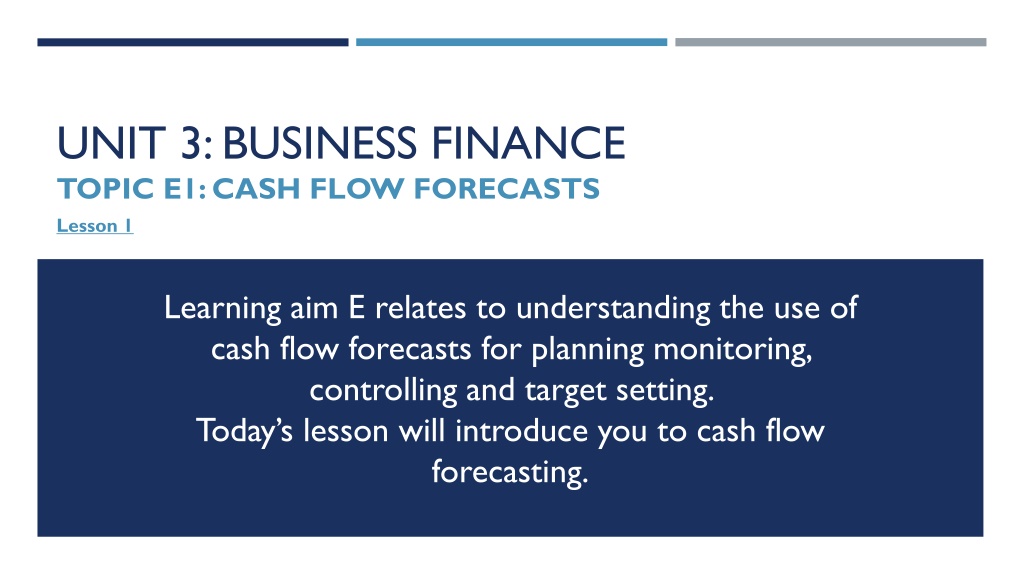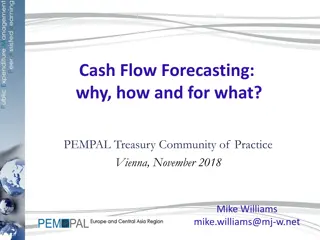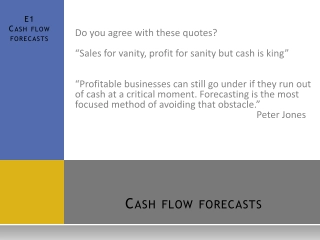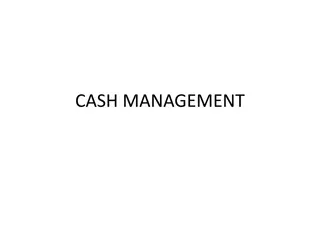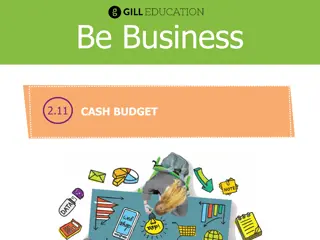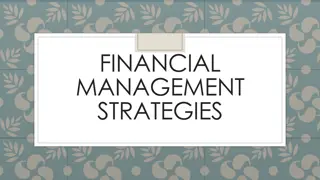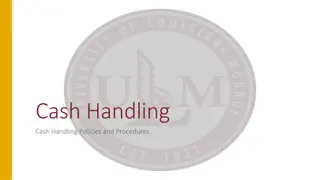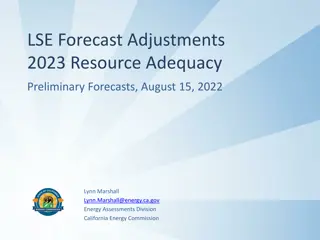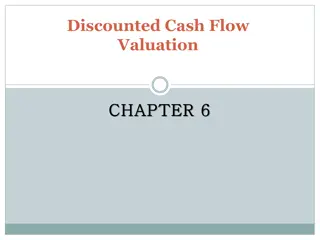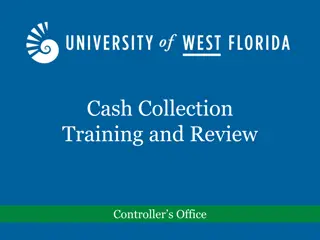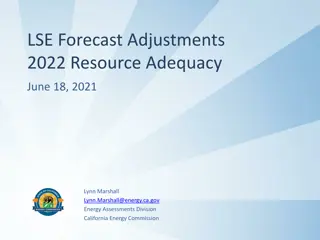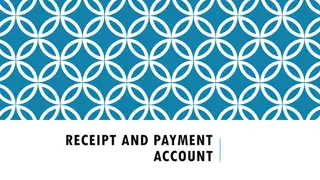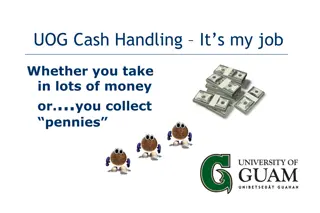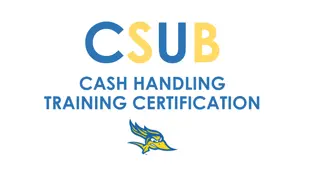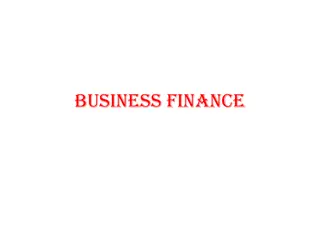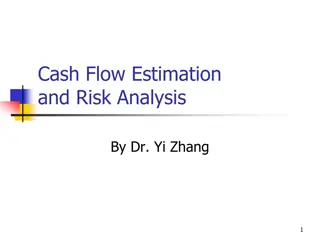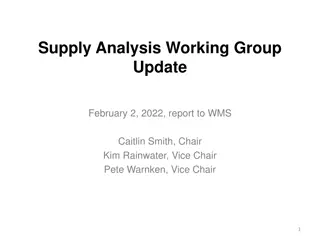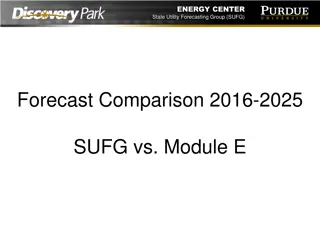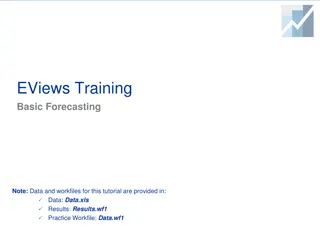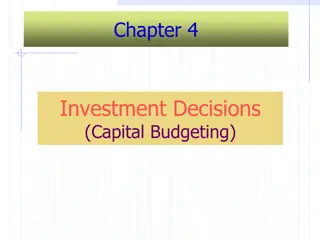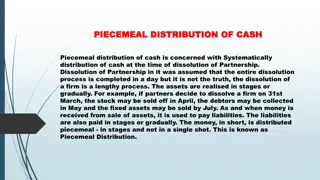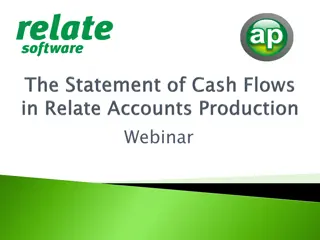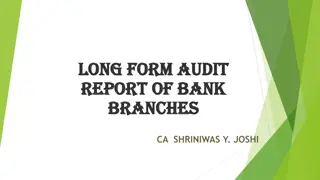Understanding Cash Flow Forecasts in Business Finance
This lesson introduces cash flow forecasting in business finance, outlining the importance of predicting, monitoring, controlling, and setting targets for cash flow. It covers key terms, purpose of cash flow forecasting, cash inflows and outflows, and the structure of cash flow forecasts. Students will learn to construct, calculate, and interpret cash flow forecasts to ensure sufficient liquidity and avoid financial difficulties.
Download Presentation

Please find below an Image/Link to download the presentation.
The content on the website is provided AS IS for your information and personal use only. It may not be sold, licensed, or shared on other websites without obtaining consent from the author. Download presentation by click this link. If you encounter any issues during the download, it is possible that the publisher has removed the file from their server.
E N D
Presentation Transcript
UNIT 3: BUSINESS FINANCE TOPIC E1: CASH FLOW FORECASTS Lesson 1 Learning aim E relates to understanding the use of cash flow forecasts for planning monitoring, controlling and target setting. Today s lesson will introduce you to cash flow forecasting.
STARTER ACTIVITY Make a list of all the possible inflows (receipts) and outflows (payments) a business may have
LEARNING OBJECTIVES Explain what is meant by cash flow Explain what is meant by a cash flow forecast Construct, calculate and interpret cash flow forecasts
KEY TERMS Cash flow: the continuous movement of cash in and out of the business Cash flow forecast: showing the expected flows of cash in and out of a business Cash flow statement: shows an historic view, showing the actual flows of cash in and out of the business Credit period: the length of time given to customers to pay for goods or services received Liquidity: measures a firm s ability to meet short-term cash payments Insolvent: when a firm is unable to meet
PURPOSE OF CASH FLOW FORECASTING Cash flows into and out of a business on a regular basis. A cash flow forecast tries: To predict in advance what and when these cash flows will be. To anticipate potential shortages of cash To examine and possibly adjust the timings of receipts and payments in order to avoid problems A healthy cash flow means that a business will have enough cash at any one point in time to meet demand for short term outflows. To arrange financial support
CASH INFLOWS AND OUTFLOWS Inflows Cash sales Credit sales: the customer pays in a pre-agreed period after the sale e.g. 30 days Loans Capital introduced: money invested from shareholders or entrepreneurs Sale of assets Bank interest received Outflows Cash purchases Credit purchases Purchase of assets VAT Bank interest (e.g paid on loans) Rent Salaries Wages Utilities
Opening balance = the amount of cash available in a business at the start of a set time period, for example a month CASH FLOW FORECAST STRUCTURE Closing balance = amount of cash available in a business at the end of a set time period for example a month. (14,420) (2,465) January s closing balance becomes February s opening balance Formula = Opening balance + cash inflows cash outflows
Check you knowledge 1. What problems does this business face as a result of their negative net cash flows from Jan to March 2. Outline three reasons why cash flow forecasts are so important to businesses 3. Can you think of any actins this business should take in light of their cash flow forecast? CASH FLOW FORECAST STRUCTURE (14,420) (2,465)
CREDIT PERIODS AND NEGATIVE CLOSING BALANCES Credit period: Must consider how long to give customers to pay. The longer the credit period, the slower will be the money coming in. Credit periods affect the ability of the business to gain credit from its suppliers. If a business can secure supplies on credit, this will then slow down the flow of cash out of the business. Negative closing balance: Business is often said to have liquidity issues and is in danger of becoming insolvent
ACTIVITY Open the Nut and Spanner template Carefully use the information alongside the template to complete the cash flow forecast for both businesses (Nut on one tab, Spanner on another)
